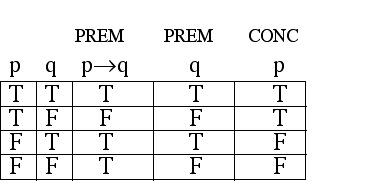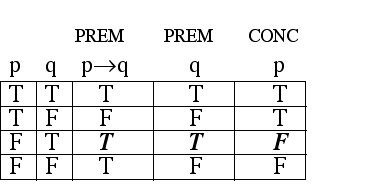EXAMPLE 2.3.6 Solution
Step 1: Symbolize the argument.
Let p be the statement "One grows vegetables."
Let q be the statement "One is a gardener."
Then the argument has this form:

(Notice that "Gomer" is taking the place of the more general subject "One..." in the first premise.)
Step 2: Make a truth table having a column for each premise and for the conclusion.

Step 3: Look for the indication of an INVALID argument (a row where every premise is true while the conclusion is false).

Notice that in the third row, both premises are true while the conclusion is false; this "bad row" tells us that the argument is INVALID.